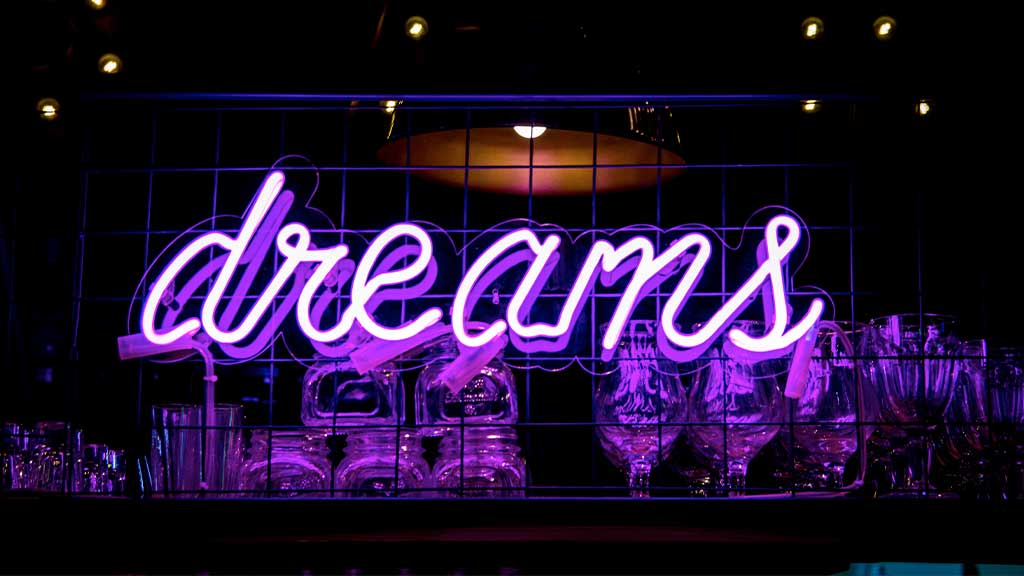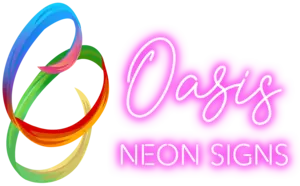
Different Types of Neon Signs Explained – Ultimate Guide
Share
Conventional neon signs have a distinct charm, don't they? Meticulously crafted from slender glass tubes filled to the full with neon gas, these signs serve as a timeless representation of the captivating nightlife.
For many years, the priceless skill of creating these brilliant displays has been meticulously passed down through the generations, protecting a trade that has remarkably not changed despite the rapid advancement of technology. There are different types of neon signs used for a variety of purposes.
Electric current meets neon gas gently to create a dazzling symphony of light that carefully constructs words and shapes. Each bend and twist is a silent testament to the craftsman's skill, adding to the enchantment. Originating from a balanced combination of gas, glass, and electricity, neon lighting's shapes enthrall with a subtle, seductive radiance that hasn't changed much throughout the lighting industry's major advancements.

Every time we gaze at the brilliant brilliance of vintage neon signs, we are genuinely admiring a well-balanced amalgam of science and art—a team that has been fine-tuned over many years. The technique of creating these radiant masterpieces has been passed down through the years, combining accuracy with a deep understanding of the underlying scientific principles.
Imagine a skilled artisan painstakingly forming a glass tube into intricate designs and characters, carefully considering each curve and twist. After it is constructed, this tube is filled with an inert gas, usually argon or neon, which initiates the process of turning it from a simple tube into a bright, glowing sign.
Electric current ignites the previously inert gas atoms inside the confined neon tube, causing them to burst into a brilliant display of color and brilliance. The colors that wrap the observer are not accidental; rather, they are the consequence of careful consideration, which is dictated by the gas used as well as the addition of particular impurities or phosphorescent coatings.
The electrodes at the end of the tube direct this bright show, starting and maintaining the bright discharge that lights up the gas. With its unique pattern and design, each sign is more than simply a directional or advertising medium—it's a work of art, a tangible example of how science and art can come together to create a breathtaking show.
Types of neon signs
If you are keen on learning neon sign types, then here are the two popular variants.
Traditional neon signs
George Claude's model served as the basis for conventional neon signage. They are composed of glass tubes that are filled with inert gasses and have electrodes on either end. Depending on the message to be shown on the sign, the glass tubes are made in a variety of shapes. A multicolored sign can also be produced by varying the inert gas used.
These signs function in the following ways:
- A power source is linked to the electrodes on the glass tubes of the sign.
- Electric current passes between the electrodes and into the inert gas within the glass tube when the power source is turned on.
- The electric current activates the gas molecules, causing them to release light.
LED neon sign
Traditional neon signs and LED neon light signs have the same appearance. Inexperienced eyes might not even be able to distinguish between them. The two are not constructed similarly, though. Flexible LED neon light strips are used to create LED neon light signs rather than glass tubes that are filled with gas.
The LED neon light strips' flexibility enables them to be bent into various letters or shapes to create signs. When the sign is finished, the LED neon lights' power supply is activated, and the sign begins to glow. Similar to classic neon signs, RGB LED or RGBW neon lights can be used to display various colors.
Custom neon signs

Stylish interior designs are frequently created with custom neon lights. Any space, including bars, hotels, and stores, may look much better with neon lighting. There are many different types and designs of neon lights. They can take the shape of things, animals, or written words. Thus, instantly giving any space a distinctive identity.
What are neon lights used for?
Neon signs are an excellent choice for conveying messages to both small and large audiences. They can be used for:
Advertising
In 1923, the first conventional neon signs appeared in advertising. George Claude sold them to an automobile manufacturer, who then used them to promote their brand. Neon lights have been a mainstay of advertising ever since the competition entered the picture.
Neon signs satisfy every requirement for a quality advertising medium. They can convey a message effectively and draw attention to themselves. Since a neon sign is an investment that you may make once and it will last a lifetime, they are also an inexpensive medium.
Decoration
For this kind of application, LED neon signs are more frequently utilized. This is because they may be made in a variety of sizes and are simpler to manufacture. Furthermore, they perform admirably in both outdoor and indoor setups, making them a popular choice for modern neon interior design projects aiming to add character and ambiance to living or commercial spaces.
Neon signs are a great way to add some flare to a feature wall or provide subtle lighting to a room. Neon signs are becoming a popular choice for a photo backdrop at occasions like weddings and celebrations; here are some examples of innovative wedding neon sign ideas. During the holidays, they can also be used as festive decorations with seasonal greetings on building facades or in parks.
What is the difference between LED lights and LED neon lights?
Despite having a similar look, neon and LED neon lights function differently and have unique qualities. Here is the summary of the comparison between neon signs vs LED signs. Understanding these differences can help you choose the best option for your needs.
Neon Lights
Electric current is used to drive low-pressure neon gas in neon lights. An identifiable, warm light is released by the gas's excited atoms when electricity is applied to them. The type of gas utilized determines the color of a conventional neon light. For example, red glows from neon gas; additional colors can be produced by applying phosphor coatings inside the tube or by utilizing other gases.

These are a few of the main characteristics of neon lights:
- Distinct Glow: The warm, distinct glow that neon lights emit is reminiscent of the vintage or retro era.
- Durability: Well-made neon lights may withstand years of use despite their delicate appearance.
- Energy Efficiency: LED lights are more energy-efficient than traditional neon lights.
- Heat Production: If handled or installed improperly, neon lights have the potential to become hot while in operation, which could result in a fire.
LED Neon Lights
LED neon lights feature types of neon elements. These lights are a more contemporary substitute for conventional neon lights. They are made up of several tiny LED lights that are encased in a flexible diffuser to give the impression of neon. Here are a few of their salient features:
- Color Variety: Compared to conventional neon lights, LED neon lights come in a wider array of colors. Additionally, they can be controlled to provide dynamic lighting effects or change colors.
- Energy Efficiency: LED neon lights use less power to produce the same amount of light as classic neon lights, making them more energy-efficient.
- Durability: Compared to conventional neon lights, LED neon lights are more resilient and have a longer lifespan. They can resist harder circumstances and are less likely to break.
- Safety: LED lights generate less heat thereby lowering the risk of burns or fires.
In summary
Neon lights are frequently used to create signage and decorations. They are excellent options for a wide range of lighting projects due to their clean light, vibrant colors, and wide brightness range. They also provide greater design freedom to accommodate the unique needs of businesses and hence have been majorly used in décor and designing signage.

